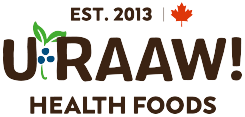Choosing healthy foods can be super confusing! This is why nutrition labels are required on the back of every packaged food. These tables are your best weapon for buying foods to meet your specific nutrition needs. You can make the best food choices by simply understanding how to read these nutrition labels.
Here are five things you should be looking for when choosing which foods to buy and eat:
Serving Size
The serving size is usually on the top left hand corner of the label. It is a measurement (in grams) that indicates how much of the food product you are expected to eat at one time. All of the information on the nutrient label corresponds to a single serving of the food!
Unfortunately, food producers can trick consumers by making the serving size unrealistic. It is important to understand that serving size is NOT the same as portion size (the amount you actually eat).
% Daily Value
% Daily Value tells you if there is a large or small amount of a nutrient in one serving of the food. The nutrients are put on a scale from 0% to 100%, and are based off of scientifically based Dietary Reference Intakes (DRIs).
Using % Daily Value, it is easy to compare two food products based on how much of certain nutrients they contain. To simplify, just remember:
- < 5% DV is a small amount
- > 15% DV is a large amount
Sugar, Protein & Fiber
The amounts of sugar, protein and fiber, typically written in grams, is a good marker for how nutritious a food item is. % Daily Value is not given for these important components. Just remember that you want the food to be higher in fibre and protein, and lower in sugar.
Nutrients
There are certain health-promoting nutrients that we require in our diet in abundance. There are many vitamins and minerals listed on a nutrition label, but a few are especially important:
- Vitamin A
- Vitamin C
- Calcium
- Iron
All vitamins and minerals must be incorporated into your diet in moderation. When looking at two foods, comparing their % Daily Value for one of these specific nutrients can help you choose most healthful food.
The Ingredients List
Arguably the most important part of any food’s packaging is it’s ingredients list. Nutrient composition will vary from food to food, but what really counts is eating a diet of whole, real foods.
Take a look at the ingredients list the next time you buy a packaged food, and you may be surprised at what you are actually eating. To improve their product’s consistency, lifespan, and appeal, food producers add numerous chemical additives to foods. Preservatives, emulsifiers, colour enhancers, and artificial sweeteners are commonly added to packaged foods.
Try to buy foods with an ingredients list that is either small, or not there at all (for produce, like apples). If there are ingredients you can’t even pronounce, that is a good indicator that the food is more processed than real.
It is crucial to nourish our bodies with fresh, real foods, so they can function in the best way possible. By understanding how the foods that we buy and eat are made, and what they contain, we can make more educated and healthy choices.
What do you keep an eye out for when you grocery shop? Let us know in the comments below!

